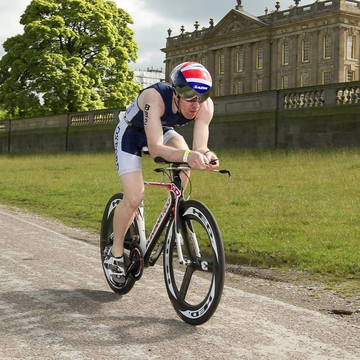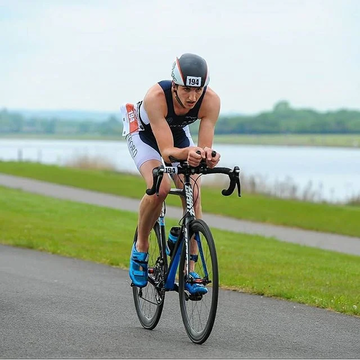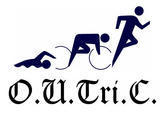Information on Bikes
Buying a bike
This guide is to help you buy a bike, especially if you’re new to cycling, triathlon, and bikes! There’s a lot of information out there, especially on the internet. This can sometimes be really useful but can also be confusing. This guide won’t give you a link to THE bike for you but hopefully will help you work out what you want from your bike and help you through the muddled world of bike buying well informed. If you are unsure after reading, it’s best to speak to a committee member, or a local bike shop (Beeline Bike, Bike Zone, Cycloanalysts)
What to Buy
What the right bike for you is will vary depending on your planned usage, budget, storage capacity, and personal preferences. It’s best to have a chat to someone, either through the Facebook group, or to one of the committee members to work out what sort of bike might be best for you based on your budget.
Top Tips:
-
Don’t be seduced by carbon fibre – there are some excellent aluminium frames out there. If you can afford it, the £500-£800 band provides the best balance of quality and low cost.
-
Some good tyres (see below near the end) can make a big difference
-
Making your decision on the basis of bike colour is a better reason than most!
-
No matter what amount of money you end up spending, a well-maintained bike will almost always work better than a more expensive but less well-maintained bike.
Frame
The frame is the core of the bike – within reason, it’s wise to get the best frame you can for your money.
-
However, try not to get carried away with the latest technological advances, lightest pieces of equipment, and most exotic materials. A great bike is one which you want to ride, which you can maintain, and which lets you do the riding you want to do.
-
Carbon fibre frames are great, but they’re not the be all and end all, and you can get some truly excellent aluminium and steel bikes at much lower price points.
-
Weight can be a major factor in the enjoyment and speed achieved through your bike, but it’s one of many factors. It’s better to be comfortable on a heavier machine, than not quite right on the latest and lightest model
Wheels
Often wheels coming with complete bikes aren’t the greatest – they can be sometimes quite cumbersome, with lower quality tyres, and lower quality hubs. But, they’re an easy upgrade later down the line (see below).
Groupset
This refers to most of the moving parts of the bike (e.g. gears, chain, brakes, cranks)
-
There are two main manufacturers (Shimano and Sram) and both have a hierarchy of groupset quality (see here)
-
Shimano 105 and Sram Rival are often cited as good quality groupsets with a decent price point. However, Shimano Tiagra and Sram Apex function equally well and parts are cheaper to replace. Similarly Shimano Sora and Claris function well, especially when well maintained. They’re cheaper because you have fewer gears, and the parts are a little heavier.
Bike fit
One of most important parts of buying a bike is making sure that it fits – this means that you have the ability to raise or lower the saddle height to a level which means you can reach the pedals and you can comfortably reach the handlebars.
-
An ill-fitting bike is probably one of the most common things leading to discomfort, lack of desire to ride the bike, and injury.
-
Thankfully, bikes are really adjustable – the saddle height can be easily changed and handlebars moved closer or further away to the rider – so don’t agonise endlessly over size as it’s easy to make adjustments afterwards if the frame is close enough.
-
Bike shops are good for letting you try out a bike for size, or equally, ask someone who’s a similar height to try out their bike and go from there.
-
Evans cycles have a handy sizing guide
-
You can adjust your bike yourself to get a better fit - YouTube videos are often helpful for this! Or get a professional fit at places such as Take3Tri and Sportstechlab.
Fitting for a time trail (TT) bike is a little trickier, so if you’re planning on buying a TT bike and are unsure on what to get, it’s probably best to speak a committee member who can point you in the right direction. This might involve paying for a professional bike fit (for a TT bike, this is highly advisable).
Where to buy?
There are three main places you can get a bike: new in store, new online, or second hand. They each have their advantages and disadvantages and no one option is best.
New in store:
Advantages:
-
Probably the safest option – you can see and probably try out what you’re buying o Face-to-face advice
-
After-sales care (often bike shops will give you a 4-week (or equivalent) checkup for free). For small jobs or problems, this can be a huge asset
Disadvantages:
-
Possibly the most expensive option (comparing the same bike). Large discounts are unlikely (but not unheard of!).
-
Limited options (this could be an advantage).
Where (in Oxford):
-
Beeline – probably the best range of new bikes in Oxford
-
Cycloanalysts – some road bikes available
-
Bike Zone – a solid catalogue of new bikes available
-
Decathlon – some solid entry and mid-range bikes available
New online:
Advantages:
-
Price – often where you’ll find the cheapest new bikes (sometimes up to 30- 40% reduced). This is especially true in Autumn/Winter when previous year’s bikes are reduced.
-
Potentially a very wide selection (this could be a disadvantage if you’re not good at making decisions).
-
Returns policies available.
Disadvantages:
-
You can’t try for size, directly – some research will be required or trying someone else’s bike
-
After-sales care isn’t as hands on as your local bike shop (but, returns and some support is available).
Where:
-
Wiggle – great in general for triathlon kit (plus you get haribo with each delivery #bestmarketingever)
-
Evans Cycles or Canyon (direct to consumer manufacturer – some excellently priced mid-range onwards bikes available)
-
Google it – there are many places!
Second Hand (online):
It’s most likely that you’ll find a second-hand bike online (or through a club member if you’re lucky).
Advantages:
-
Most likely to be the cheapest option – 40-80% reduction from the full price of the bike.
-
Can try for size (if collection)
-
Can ask the person selling about it and how they find riding it.
Disadvantages:
-
Requires the most knowledge and experience
-
Risk of buying something stolen or damaged.
-
Probably no after-sales care available
-
Bikes may require some work/maintenance before being rideable.
Where:
-
Ebay
-
Facebook:
-
Buy and Sell Cycling Stuff in the South West – occasional sellers from Oxford
-
Buy and Sell Cycling Stuff in Oxfordshire – usually trustworthy sellers, often possible to view in person
-
Great for TT equipment, but road bikes are available as well.
-
Many other buy and sell Facebook groups - some specifically for triathlon
-
-
Classifieds:
-
Cycling Weekly
-
TimeTrialling Forum – good for TT equipment and occasionally complete road bikes.
-
-
Gumtree – be aware that you might be purchasing a stolen bike, but bargains are to be had if you trust the seller!
Budget?
A good way of buying bike is to assign a budget and to work within that budget. When deciding your budget, leave a little spare for additional items such as pedals, saddle bag, spare inner-tubes, a multi tool, and a puncture repair kit (c.£50-£100). You’ll probably never pay RRP for a bike (the RRP is probably made with this in mind!) as there’s always some discount available somewhere.
Entry Level - £300-800
-
Aluminium frames
-
Low end, unbranded components and gears
-
Some decathlon models
Lower mid-range - £800-1200
-
Aluminium frame – low-mid range components (e.g. Shimano Tiagra, SRAM Apex), and average/heavy wheels.
-
Will be perfectly functional, but a little heavy/sluggish and might have fewer gears (which can be awkward) or parts which deteriorate sooner.
Higher mid-range - £1200-2000
-
Mid spec to top spec aluminium frames – e.g. Shimano Tiagra/105, SRAM rival with average-decent wheels)
-
Some decent steel frames available (often heavier, but ride quality can be excellent)
-
Low spec carbon frames – e.g with Shimano Sora/Tiagra, unbranded brakes and wheels (often, an aluminium bike at an equivalent price is better).
Higher level - £2000+
-
Top spec aluminium frames – with high end components (e.g. Shimano Ultegra/Dura Ace, SRAM Force/Red)
-
Carbon fibre frames with mid-range components and above (e.g. Shimano 105 and above, SRAM Force and above, often with training wheels)
-
New TT bikes
Upgrades
Once you’ve got your bike and have ridden it for a while you might be thinking about upgrading some of its parts. The core of the bike is the frame, but there’s ample opportunity to upgrade around this:
Wheels
One of the best upgrades available. Can shed a little weight from your bike, and go faster! Possible upgrades include:
-
Deeper section rims – faster in most circumstances, but some are susceptible to cross winds and can feel sluggish.
-
Studier wheels – good for winter riding, off-road/gravel riding, and touring
-
Lighter wheels – feel very responsive and lively to ride, the jury is out over how much speed difference they make
-
All three – raid your piggy bank!
Tyres
Arguably the best upgrade. A good set of tyres can make a large difference to how you bike rides. What a good set is depends on what riding you do (e.g. are you after puncture protection, speed, comfort, grip). You can pay anything from £20-80 for a tyre, £40-55 RRP is a good price point (it does sound expensive, but the right tyre is a game changer).
Winter options:
-
Clement strada
-
Schwalbe Durano
-
Hutchingson Fusion 5
All round options:
-
Continental GP 4000s2
-
Panaracer A Evo 3
Race tyres:
-
Schwalbe Pro One
-
Speclialised S-Works Turbo
If you’re unsure on what tyres may be best, ask a committee member.
Groupset
A commonly cited upgrade. Unless parts are worn, it’s probably not worth changing. You’re better off buying better cables (ie stronger or low friction coated) than replacing parts which are not worn as better cables will help your gears and brakes work more smoothly.
Saddle and handlebars
These are the two key contact points. The right handlebar and saddle shape for you makes an enormous different to comfort. The best way to find out, however, is to try different things out (some bike shops – e.g. Bike Zone – have test saddles for some brands!).
However, the best value upgrade available is a sponge, a bucket, some degreaser and fairy liquid, and a little elbow grease…
What is a TT bike? Should I get one?
A TT (time-trial or triathlon) bike is basically a modified version of the standard road bike. The main difference is that instead of normal handlebars, it has extensions that you can rest your arms on, shifting your weight further forward and lower. The aim is to make you more aerodynamic. There are even gear shifters at the end of the extensions so you can remain in your aero position. The whole frame angle/seating position of the bike is also modified to make you as aero as possible.

TT bike with deep section front wheel and rear disc wheel
Advantages
-
More aero = faster than road bikes on flat, non-technical courses
-
Modify your position to make it easier to run off the bike
Disadvantages
-
Expensive. Often for the price of a very good road bike, a TT bike would have cheaper components.
-
Unsuitable for riding close to other people (i.e. in a group ride)
-
Cannot be used in draft-legal races
-
Heavier than road bikes so are not good at climbs
-
Hard to handle so cannot be used on rides that have difficult descents/technical sections
So if you are debating between a TT bike and a road bike, we strongly recommend getting a road bike as you'll likely get much more use out of it. If you already have a decent road bike and are looking into getting a TT bike, go for it! But there are things you can do to make your road bike more aero without breaking the bank or needing to get a whole new bike:
-
Add aero/tri bars. These are extensions that you screw onto the handlebars of your bike to give it TT-lik extensions.
-
Upgrade your wheels. Deep section wheels will make you more areodynamic.
-
Adjust your position. Focus on bringing your body and head as low as is still comfortable, maintainable and gives you good visibility. If you don't have tri bars, use your drop handlebars, bend your elbows and tuck your head in towards your chest.

Road bike with clip-on aero bars
Bike repair and maintenance
It's important to take care of your bike. If your bike is regularly cleaned and well-maintained, it will last for longer, go faster and look nicer!
Remember to clean your bike often
It's a bit of a pain but if you wash your chain and chainset/cassette regularly, you'll prevent a build up of dirt and grease which causes wear on your bike components. Over time, this will damage your bike and slow you down. YouTube again has some pretty great tutorials on how to give your bike a quick but thorough clean.
Sort out any issues quickly
If your bike stops working or just isn't working as smoothly as before, again YouTube is often the place to go if you want to fix it yourself. However (particularly if it is a complex problem) we recommend taking it in to a bike shop. There are several good bike shops in Oxford. We highly recommend Beeline Bicycles or CycloAnalysts (both located on Cowley Road and offering a 10% discount to OUTriC or OUCC members).
Get an annual routine service
It also may be worth taking your bike in for a routine check-up/service once a year or so just to check everything's working as it should - a few weeks before your first big race of the season is an ideal time to do this!
Further questions? The committee and many people on the WhatsApp will be happy to help!




